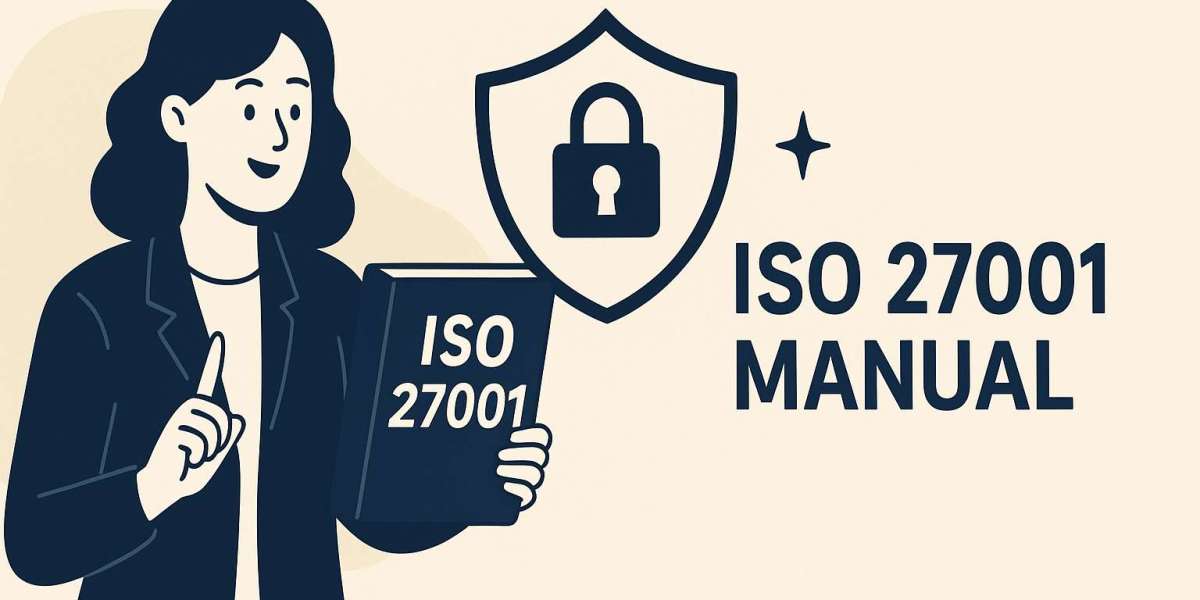In the ever-evolving landscape of cyber threats, building a culture of continuous security awareness has become a top priority for organizations of every size. While most companies focus on tools and technologies to protect their information assets, one of the most effective yet often underutilized resources is the ISO 27001 Manual.
Far from being just a compliance document, the ISO 27001 Manual can serve as a living training tool that continually educates employees, aligns their actions with organizational security goals, and fosters a culture of proactive information protection.
Understanding the Purpose of the ISO 27001 Manual
The ISO 27001 Manual forms the backbone of an organization’s Information Security Management System (ISMS). It outlines the framework, policies, objectives, and roles required to establish and maintain effective information security practices.
Many organizations treat this manual as a static document — something prepared once for certification and then archived. However, in reality, it should be a dynamic and evolving guide that continuously informs and educates employees about the organization’s information security principles, risk controls, and responsibilities.
By positioning the ISO 27001 Manual as an active learning resource, companies can transform routine documentation into a practical training tool that reinforces awareness across all levels of the organization.
Transforming Documentation into Daily Learning
To function as a training tool, the ISO 27001 Manual must be accessible, understandable, and relevant. It should not only define what security controls exist but also explain why they are important and how employees can apply them in their daily work.
Organizations can also use Editable ISO 27001 Manual templates to tailor training sections for different departments. For instance, IT teams might focus on network controls and incident reporting, while HR might use sections that cover employee confidentiality and data access rights. This customization ensures that the manual remains relevant and effective as a learning resource.
Encouraging Employee Engagement with the Manual
A truly effective ISO 27001 Manual doesn’t live in a binder — it lives in the minds of employees. To achieve that, organizations must encourage regular engagement with the manual’s content.
This can be done through:
- Periodic awareness sessions based on manual topics.
- Micro-learning modules derived from the manual’s policies.
- Quizzes and scenario-based discussions to reinforce key points.
- Feedback channels where employees can suggest improvements or report ambiguities in the manual.
Such initiatives help employees view the manual as something that grows with them — a living document that evolves as new threats, technologies, and processes emerge.
Integrating the ISO 27001 Manual into Security Awareness Programs
Organizations that already run formal awareness programs can easily integrate the ISO 27001 Manual into them. For example:
- Each month, one section of the manual (such as “Access Control” or “Incident Response”) can be featured in awareness newsletters or intranet posts.
- Managers can use excerpts during team meetings to highlight best practices.
- Internal auditors can use it as a reference to assess employee understanding of policies.
By using the Readymade ISO 27001 Manual as a foundation, companies can build structured and repeatable awareness campaigns that align perfectly with their certification requirements and internal training objectives.
Keeping the Manual Dynamic and Up to Date
To maintain its role as a living training tool, the ISO 27001 Manual must evolve alongside the organization’s risk landscape. Threats change, new technologies emerge, and business processes transform — and the manual should reflect those changes.
Regular reviews (at least annually or after major incidents) ensure that the manual remains relevant and educational. Using an Editable ISO 27001 Manual allows organizations to quickly incorporate updates without starting from scratch. These updates can also serve as learning opportunities, giving employees new insights into emerging risks and mitigation strategies.
Conclusion
The ISO 27001 Manual is much more than a compliance artifact — it is a powerful instrument for building continuous security awareness. When treated as a living document rather than static paperwork, it becomes a training resource that educates, engages, and empowers employees to take ownership of information security.
In short, the true value of the ISO 27001 Manual lies not in its existence, but in how actively it is used to cultivate everyday awareness — making security a shared responsibility across the organization.



